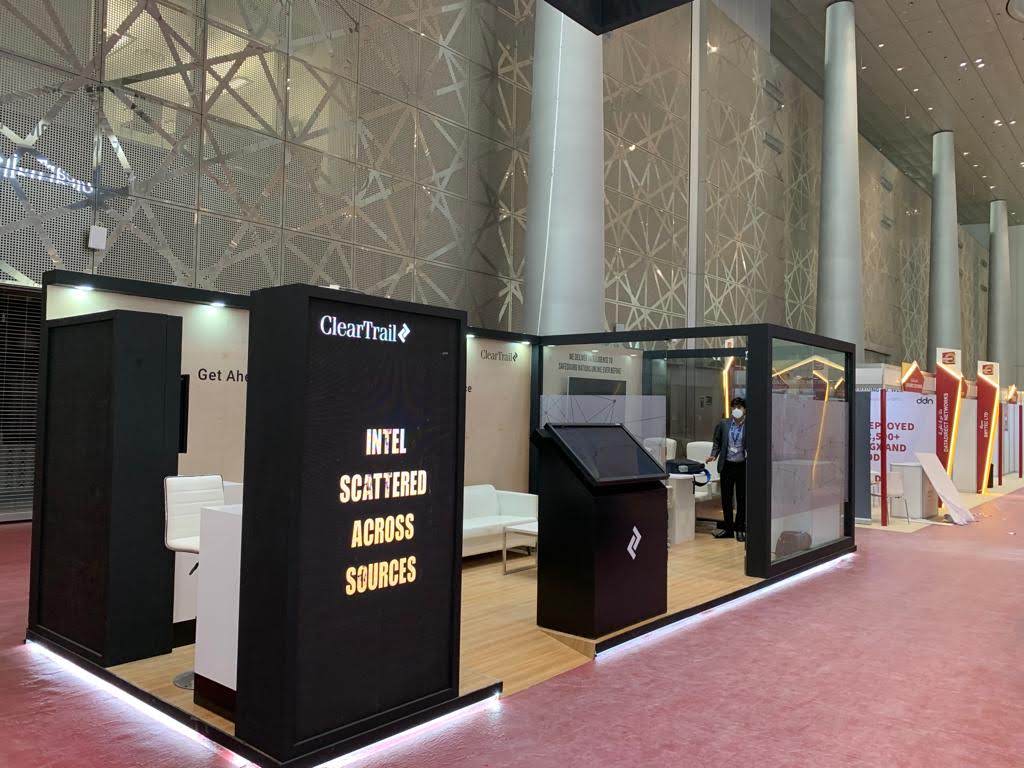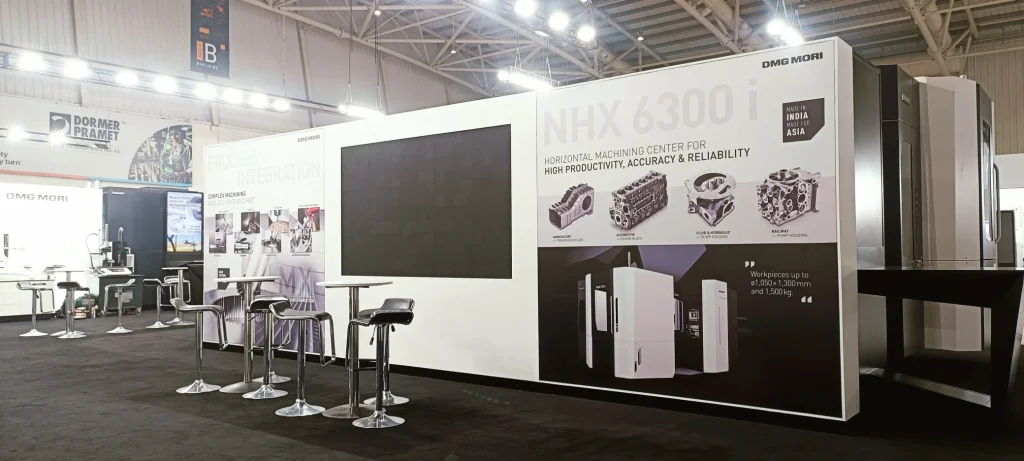
Introduction
In the fast-paced world of trade shows and expos, the ability to adapt quickly to changing circumstances and audience needs is crucial for success. Traditional static booth designs often fall short in providing the flexibility required to engage diverse audiences effectively.
Adaptive expo stall designs offer a solution by creating flexible and dynamic spaces that can be easily modified to suit various requirements and objectives. This blog explores the concept of adaptive expo stall designs, their benefits, key components, and practical tips for implementation.
The Concept of Adaptive Expo Stall Designs
What Are Adaptive Expo Stall Designs?
Adaptive expo stall designs are booth setups that can be easily reconfigured to meet different needs and objectives during an event. These designs leverage modular components, movable walls, and multifunctional furniture to create spaces that can change shape, layout, and functionality on the fly.
Key Benefits
- Flexibility: Quickly adapt to different activities, such as product demonstrations, meetings, and presentations.
- Engagement: Tailor the booth environment to better engage with different visitor segments.
- Efficiency: Maximize the use of available space and resources.
- Innovation: Present a modern, forward-thinking image that aligns with the dynamic nature of your brand.
Components of Adaptive Expo Stall Designs
Modular Structures
Modular structures form the backbone of adaptive stall designs. These components can be assembled and reassembled in various configurations, allowing for quick and easy changes to the booth layout.
- Interchangeable Panels: Use panels that can be swapped out or rearranged to create different sections within the booth.
- Expandable Frames: Frames that can be expanded or contracted to alter the size and shape of the booth.
Movable Walls and Partitions
Movable walls and partitions provide the ability to create private meeting spaces, open presentation areas, or segmented product displays as needed.
- Sliding Panels: Install sliding panels that can be moved to create or remove sections.
- Collapsible Partitions: Use collapsible partitions that can be easily set up or taken down to reconfigure the space.
Multifunctional Furniture
Furniture that serves multiple purposes enhances the adaptability of the booth. For example, seating that doubles as storage or tables that can be transformed into display units.
- Convertible Furniture: Chairs that convert into tables, or benches with hidden storage compartments.
- Mobile Units: Furniture on wheels that can be easily moved and reconfigured.
Technological Integration
Incorporate technology to enhance the adaptability and interactivity of the booth.
- Digital Displays: Use screens that can be repositioned or repurposed to display different types of content.
- Interactive Kiosks: Install kiosks that can provide information, capture leads, or offer interactive experiences.
Benefits of Adaptive Expo Stall Designs:
Enhanced Visitor Engagement
Adaptive designs allow you to tailor the booth environment to better engage different visitor segments, providing personalized experiences that resonate with each group.
- Customized Interactions: Create spaces that cater to specific interests, such as interactive product demos or quiet areas for in-depth discussions.
- Dynamic Presentations: Change the layout to accommodate different presentation styles and audience sizes.
Improved Space Utilization
Adaptive designs make the most of the available space, ensuring that every inch of the booth is used effectively.
- Versatile Configurations: Quickly switch between different setups to suit various activities, from product launches to networking events.
- Efficient Layouts: Optimize the flow of traffic within the booth to prevent congestion and enhance visitor experience.
Cost-Effectiveness
While the initial investment in modular and adaptive components may be higher, the long-term cost savings are significant.
- Reusable Components: Use the same components across multiple events, reducing the need for new materials.
- Reduced Setup Time: Quick assembly and disassembly save on labor costs and minimize downtime.
Practical Tips for Implementing Adaptive Expo Stall Designs
Plan for Versatility
When designing your adaptive booth, consider the various activities and interactions you want to facilitate. Plan for versatile layouts that can be easily modified.
- Identify Key Activities: Determine the primary functions of your booth, such as product demonstrations, meetings, or presentations.
- Design for Flexibility: Ensure that each component of your booth can serve multiple purposes and be easily reconfigured.
Invest in Quality Components
High-quality modular components, movable walls, and multifunctional furniture are essential for creating a durable and adaptable booth.
- Durable Materials: Choose materials that can withstand frequent reassembly and transport.
- Reliable Mechanisms: Ensure that movable parts, such as sliding panels and collapsible partitions, operate smoothly and reliably.
Incorporate Technology Thoughtfully
Integrate technology in a way that enhances the adaptability and functionality of your booth without overwhelming visitors.
- User-Friendly Interfaces: Ensure that interactive elements, such as touchscreens and kiosks, are intuitive and easy to use.
- Flexible Displays: Use digital displays that can be easily repositioned and repurposed to show different types of content.
Train Your Staff
Ensure that your booth staff is well-versed in the setup and reconfiguration of the adaptive components. This training will enable them to make quick changes as needed.
- Setup Protocols: Develop clear protocols for setting up and reconfiguring the booth.
- On-the-Fly Adjustments: Train staff to make adjustments quickly and efficiently during the event.
Monitor and Optimize
Continuously monitor the effectiveness of your adaptive booth design and make improvements based on feedback and performance.
- Visitor Feedback: Collect feedback from visitors to understand what aspects of the booth are most engaging and effective.
- Performance Metrics: Track key performance indicators, such as visitor engagement and lead generation, to assess the impact of the adaptive design.
Conclusion
Adaptive expo stall designs offer a powerful solution for businesses looking to maximize their impact at trade shows and expos. By creating flexible and dynamic spaces, companies can engage visitors more effectively, utilize space efficiently, and present a modern, innovative image.
Investing in modular structures, movable walls, multifunctional furniture, and integrated technology will enable you to create a booth that not only meets the diverse needs of your audience but also adapts seamlessly to changing circumstances. As the trade show industry continues to evolve, the ability to adapt quickly and effectively will be key to staying ahead of the competition and achieving lasting success.


 US
US
 EU
EU


